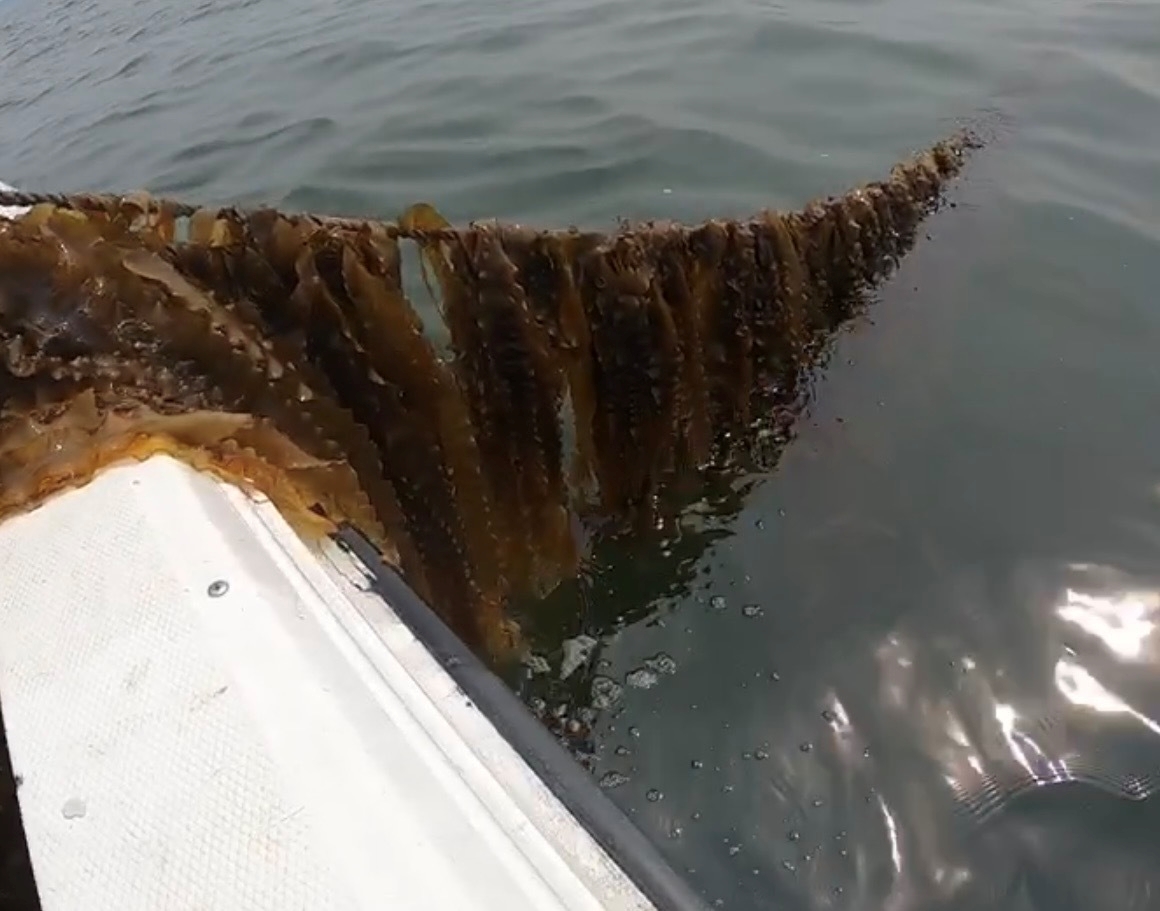
A longline farming system consists of a long, suspended horizontal (“backbone”) line (rope) that is stretched out and anchored to the seafloor at each end of the line. Floats are interspersed along the line to keep it suspended. Seed is placed in growout gear (cages, nets, trays) that is suspended from the longline. The gear is cleaned periodically to remove other organisms that may inhibit growth or add unwanted weight to the lines. Shellfish growout gear may also be hung vertically from docks, barges and rafts, as done with red abalone and purple sea urchins in California and mussels in Washington.
Mussels and oysters (Olympia and other oyster species) are grown on suspended longlines in bays and the open ocean. For these longline systems, the "backbone" line is submerged underwater. To keep it afloat, vertical lines with surface buoys are interspersed along it, with additional buoys marking the location of the anchored ends. Hatchery-produced small “seed” mussels are placed in growout gear – typically a long, thin, expandable and often biodegradable mesh “sock” or tube with a “fuzzy” rope running through it. The growout gear is vertically suspended from the horizontal longline or dock and maintained by divers or brought to the surface using a motorized reel or crane.

Seaweeds such as sugar kelp are grown on suspended longline systems, typically in sheltered nearshore or intertidal habitats. Similar to other longline farming systems, seaweed longline systems consist of a long, suspended horizontal (“backbone”) line (rope) that is submerged in the water and anchored to the seafloor at each end of the line. To keep it afloat, vertical lines with surface buoys are interspersed along it, with additional buoys marking the locations of the end anchors. Long, thin strings of hatchery-produced “seed” seaweed are wrapped around the longline so that the strings remain close to the surface. This increases exposure to the sun, essential for seaweed to survive and grow. In shallow and intertidal areas, short strings may be hung vertically or horizontally from the line.

Image captions and credits
Sugar kelp growing on suspended longline; Simona Augyte
Illustration of aquaculture growout gear (from left to right): trays and pearl nets of shellfish, sock of mussels, line of seaweed and empty pocket and lantern nets used for growing shellfish; Marissa Bills